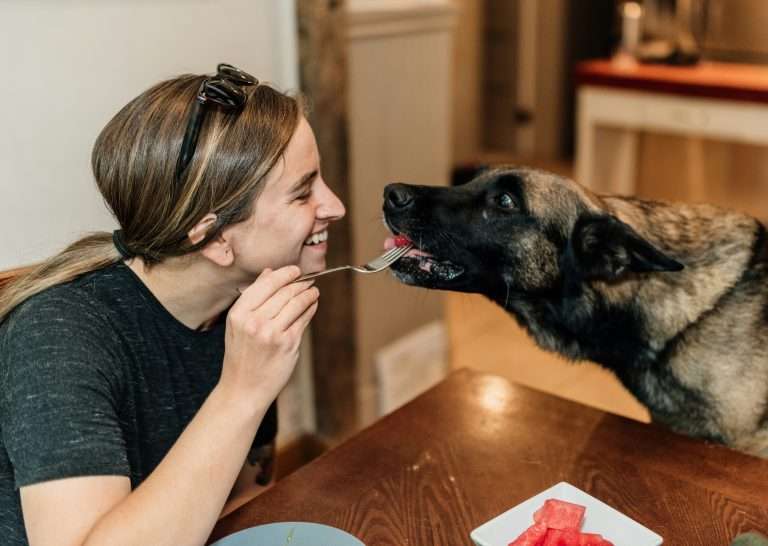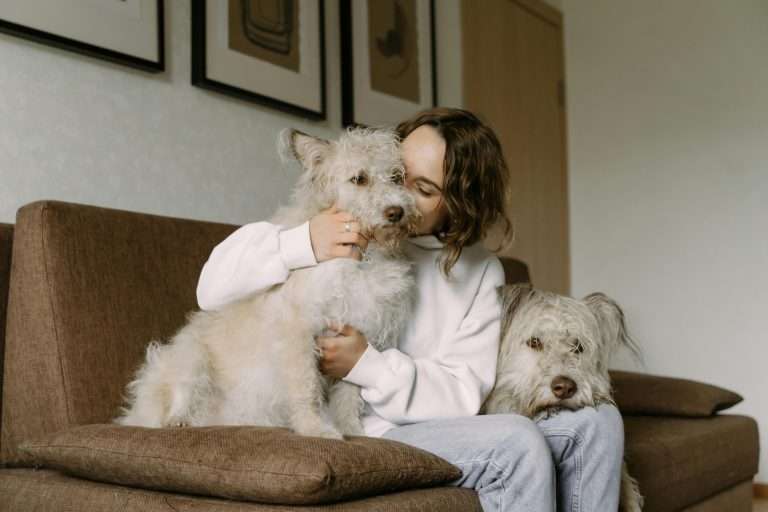How Long Do Mastiffs Live? Understanding Their Lifespan and Health

Dog owners know that a pet’s lifespan matters deeply, especially when they choose or care for their furry friends. This hits home even more with Mastiffs. These gentle giants win our hearts with their loyalty and affection.
People give different answers about a Mastiff’s lifespan. Some say 6 years; others claim 12. The honest answer depends on several things, from genes to healthcare. Mastiff owners need to understand typical health patterns. This knowledge helps them care for English Mastiffs, Bull Mastiffs, or other Mastiff varieties.
Let me share a detailed look at what you can expect. We’ll discuss average Mastiff lifespans and the factors that affect their longevity. You’ll also learn about their health needs during different life stages. The good news is that recent medical breakthroughs might help these beloved dogs live longer.
Table of Contents
Average Mastiff Lifespan Statistics
The statistics about Mastiffs’ lifespans reveal some fascinating patterns. Research indicates that the median age of death for Mastiffs is 8 years. European Mastiffs live about 7.72 years, while their North American counterparts reach 8.17.
Typical age range and life expectancy
Most Mastiffs live between 6 and 10 years. The sort of thing I love is how this lifespan varies among different Mastiff breeds. The numbers tell an interesting story:
- Tibetan Mastiffs stand out with their impressive 11.92 years
- Bull Mastiffs reach 7.46 years
- English Mastiffs live to 6.83 years
- Neapolitan Mastiffs have a shorter life of 2.33 years
Gender and breeding status substantially affect how long these dogs live. Female Mastiffs outlive males with an average of 8.41 years compared to 7.61 years. Neutered females show the best survival rates at 8.86 years.
Comparison to other giant breeds
Giant breed dogs share similar lifespan patterns. These breeds usually live between 8-10 years. The numbers stack up this way:
- Great Danes: 7-10 years
- Saint Bernards: 8-10 years
Factors Affecting Mortality Rates
Owner experience plays an unexpected role in these dogs’ lifespans. Dogs living with breeders reach 8.20 years, while those with first-time owners live 7.86 years.
The location makes a difference, too. North American Mastiffs show better survival rates as they age. About 61% reach maturity compared to 54% of European dogs.
Neutered or castrated Mastiffs enjoy longer lives. They live an average of 8.40 years, while intact dogs reach 7.48 years. This extra year means a lot in these gentle giants’ lives.
Cancer remains the most significant health concern. It affects 38% of breeder-owned dogs and rises to 55% in first-time owner situations. These numbers highlight why experienced care matters so much for these magnificent animals.
Genetic Factors Affecting Mastiff Longevity
The genetic blueprint of Mastiffs reveals fascinating connections between their DNA and longevity. My role as a breed expert makes it significant to understand how genetics shapes these gentle giants’ lifespan.
Inherited health conditions
A closer look at Mastiff’s health shows that certain inherited conditions substantially affect their life expectancy. The most common hereditary diseases affecting Mastiffs include:
- Hip and elbow dysplasia, causing joint deterioration
- Cancer, especially osteosarcoma and lymphoma
- Heart conditions, significantly dilated cardiomyopathy
- Degenerative myelopathy affecting spinal cord health
Cancer remains the most common cause of death in Mastiffs, and bone cancer occurs more frequently.
Breed-specific genetic disorders
Mastiffs face unique genetic challenges. Research shows limited genetic variation from small founder populations has accelerated the breed’s risk of inherited conditions. This becomes evident with cystinuria, which is more common in Mastiffs than in any other breed.
Impact of selective breeding
Research indicates that selective breeding practices have substantially influenced Mastiff health. Modern breeding focuses more on appearance rather than functionality or longevity. This approach leads to concerning outcomes.
Inbreeding within restricted gene pools increases the likelihood of genetic health conditions. Mastiffs suffer specifically because breeders “lockdown” their breed’s gene pool and prevent the introduction of beneficial genes from other breeds.
Statistics tell the story: purebred dogs like Mastiffs live about 1.2 years less than mixed-breed dogs of similar size. This difference comes from limited genetic diversity in purebred lines.
The future looks promising. The growing emphasis on genetic testing in breeding programs brings hope. Responsible breeders screen for various health conditions before breeding, and organizations like the OFA (Orthopedic Foundation for Animals) maintain databases to improve breeding practices.
The key to extending Mastiff longevity is balancing breed standards with genetic diversity. Breeding programs prioritizing health over appearance can help preserve these magnificent dogs while extending their lives.
Common Age-Related Health Issues
My years of studying health challenges affecting Mastiff longevity revealed clear patterns at each life stage. This knowledge helps me provide better care for these magnificent dogs.
Early-life health challenges
Young Mastiffs face several health challenges that can affect their development. From my work with these puppies, I’ve seen common issues like:
- Panosteitis: A self-limiting condition that causes pain and lameness
- Hypertrophic osteodystrophy (HOD): A severe condition that affects bone development
- Urinary infections: These show up often in young Mastiffs
- Progressive retinal atrophy: This can appear as early as 6 months old
Adult-onset conditions
Adult Mastiffs deal with several serious health challenges. Cancer is the leading cause of death and affects 47% of all cases. Heart problems account for 8% of deaths, and gastric issues, including bloat, make up 7% of mortality cases.
Adult Mastiffs seem especially prone to specific cancers:
- Osteosarcoma
- Lymphoma
- Hemangiosarcoma
- Mast cell tumors
Senior health concerns
Mastiffs become seniors around 6-7 years of age and face multiple age-related challenges. Because of their large size, arthritis becomes a big concern. Heart disease develops in up to 75% of senior dogs, making heart health a vital focus for aging Mastiffs.
These dogs reach their senior years much earlier than smaller breeds, usually by 7-8 years. Cognitive decline affects many older Mastiffs, and I’ve seen signs like:
- Disorientation
- Disrupted sleep patterns
- Changes in house training
- Different ways of interacting with family
Vision and hearing loss affect many senior Mastiffs and develop slowly over time. Hypothyroidism shows up in up to 15% of Mastiffs and can affect their quality of life significantly in their later years.
Senior Mastiffs often develop elbow hygromas – fluid-filled lumps that form over pressure points. These aren’t usually dangerous but show why proper bedding matters to our aging gentle giants.
Critical Health Screenings by Life Stage
Health screenings are vital to maximize your Mastiff’s lifespan. A proactive approach to health monitoring makes the most significant difference. Let me share my expertise about the screenings your dog needs at each life stage.
Puppy health testing
Proper monitoring is vital for Mastiff puppies that grow faster through their first two years. Slow and steady growth works best. My puppy checkups focus on several areas:
- Hip and elbow evaluations
- Eye examinations
- Cardiac assessments
- Genetic screening for inherited conditions
Your puppy needs appropriate nutrition with protein percentages no higher than 26% and a calcium/phosphorous ratio of approximately 1.2:1.
Adult preventive care
Adult Mastiffs need complete screenings twice yearly. These examinations should include:
Essential Health Screenings:
- Complete blood count (CBC)
- Biochemistry profile
- Urinalysis
- Thyroid hormone testing
Regular monitoring helps detect minor changes that could signal disease onset. Dogs excel at hiding illness, which makes these screenings even more important for early detection.
Senior health monitoring
Senior Mastiffs, typically those over 6-7 years, need more frequent health assessments. Complete testing becomes especially important as 75% of senior dogs develop some form of heart disease.
My senior Mastiff monitoring focuses on the following:
- Body and muscle condition scoring
- Pain assessment and management
- Laboratory testing (blood work and urinalysis)
- Cognitive function evaluation
I love that early detection through screenings can slow disease progression when we can’t find a cure. Wellness testing works best when combined with annual vaccinations and heartworm testing.
Senior Mastiffs should have checkups every six months. This helps us catch health issues early to maintain their quality of life. This all-encompassing approach to health screening has helped many Mastiffs live longer, healthier lives.
Medical Advances in Extending Mastiff Lifespan
Veterinary medicine has changed beyond recognition, and I’m thrilled to share how these changes help Mastiffs live longer. My years of practice have shown remarkable progress that brings hope to Mastiff owners who want their beloved companions to live healthier, longer lives.
Modern veterinary treatments
Veterinary care has significantly improved compared to 30 years ago. Digital radiography, ultrasound, and advanced anesthesia equipment have revolutionized our diagnostic and treatment capabilities for Mastiffs. These technologies give us accurate results on the same day to start treatments faster.
The modern tools I use regularly include:
- Automated analyzers for immediate diagnostic tests
- Digital imaging with AI-assisted interpretation
- Electronic health records for complete care tracking
- Advanced surgical equipment for minimally invasive procedures
Emerging therapies
Several breakthrough treatments show real promise to extend Mastiff lifespans. Laser therapy has become a vital tool for managing pain and speeding up healing. I love how these treatments help with common Mastiff conditions, from arthritis to post-surgical recovery.
Another reason for optimism is that new drugs are explicitly designed to help dogs live longer. One promising development targets large breeds like Mastiffs, with clinical trials showing potential for longer life expectancy. The FDA has recently demonstrated unprecedented support for these developments, which marks a historic milestone in veterinary medicine.
Future research directions
The horizon holds several exciting developments. AI has revolutionized veterinary care with new tools that can:
- Analyze medical images with unprecedented accuracy
- Predict health issues before they become serious
- Provide customized treatment recommendations
- Monitor vital signs immediately
At-home monitoring systems that use advanced sensors and AI to track Mastiffs’ health show incredible promise. These state-of-the-art tools help us spot potential issues earlier, which could add precious years to our gentle giants’ lives.
AI integration into point-of-care analyzers has altered the map of diagnosis and treatment. These tools now provide vital diagnostic information immediately, which leads to more accurate and timely treatments for Mastiff patients.
The future of veterinary medicine brings excellent hope for Mastiff owners. Clinical trials for new lifespan-extending treatments continue, and diagnostic and therapeutic technologies keep advancing. We might soon have a more optimistic answer to the question, “How long do Mastiffs live?”
Conclusion
My experience with Mastiff lifespans reveals that these gentle giants tend to have shorter lives than smaller breeds. However, proper care can substantially affect their longevity. Research demonstrates that regular health screenings, genetic testing, and modern veterinary advances help extend Mastiff’s lives beyond traditional expectations.
Scientific developments continue to show promise. New medications for large breeds and advanced diagnostic tools detect health problems early. These breakthroughs, proper breeding practices, and consistent health monitoring paint an optimistic picture for Mastiff Care’s future.
Each stage of a Mastiff’s life demands unique attention and care strategies. Proactive healthcare from puppyhood through their senior years is the best way to maximize their lifespan. These loyal companions might not have the most extended lifespans, but their devoted and loving nature makes every moment with them invaluable.
FAQs
Q1. What is the average lifespan of a Mastiff?
The average lifespan of a Mastiff typically ranges from 6 to 10 years. However, this can vary depending on the specific Mastiff breed. For example, Tibetan Mastiffs tend to live longer, with an average lifespan of about 12 years, while English Mastiffs generally live around 7 years.
Q2. What are the most common health issues affecting Mastiffs?
Mastiffs are prone to several health issues, with cancer being the leading cause of death. Other common problems include hip and elbow dysplasia, heart conditions like dilated cardiomyopathy, and gastric issues such as bloat. They may also face breed-specific genetic disorders like cystinuria.
Q3. How does neutering affect a Mastiff’s lifespan?
Neutering or spaying can significantly impact a Mastiff’s lifespan. Studies show that neutered or spayed Mastiffs tend to live longer, with an average lifespan of 8.40 years compared to 7.48 years for intact dogs. This represents nearly a one-year increase in life expectancy.
Q4. What health screenings are important for Mastiffs at different life stages?
For puppies, hip and elbow evaluations, eye examinations, and cardiac assessments are crucial. Adult Mastiffs should undergo regular blood tests, urinalysis, and thyroid hormone testing. Senior Mastiffs (over 6-7 years) require more frequent check-ups, including cognitive function evaluations and comprehensive health assessments.
Q5. Are there any new medical advancements that could help extend Mastiff’s lifespan?
Yes, several promising developments could help extend Mastiff’s lifespan. These include laser therapy for pain management and healing, new drugs specifically designed to extend the lifespans of large-breed dogs, and AI-assisted diagnostic tools. Additionally, at-home monitoring systems using advanced sensors and AI are being developed to track Mastiffs’ health more closely.







Thanks for sharing. I read many of your blog posts, cool, your blog is very good.